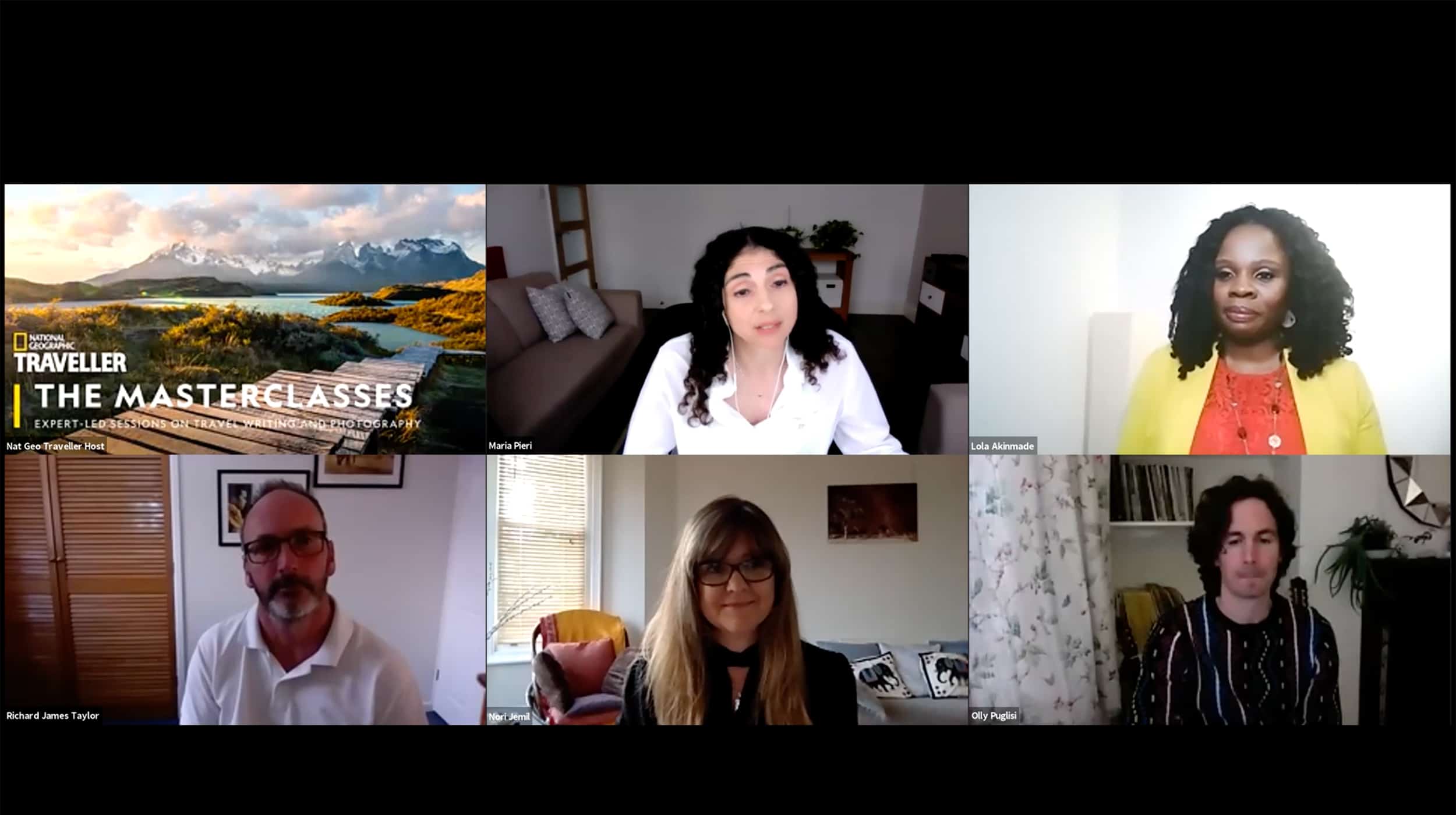
The Masterclasses online: what we learned on the second day
National Geographic Traveller (UK) The Masterclasses online were back for a second day of workshops on Tuesday 20 April.
During the first session of the evening, National Geographic Traveller Food editor Glen Mutel was joined by travel writer and editor Pól O’Conghaile, blogger Kash Bhattacharya, travel journalist Francisca Kellett and National Geographic Traveller Food deputy editor Nicola Trup to discuss the dos and don’ts of travel writing. Next up, the magazine’s editorial director Maria Pieri and picture editor Olly Puglisi, with photographers Lola Akinmade Åkerström, Nori Jemil and Richard James Taylor, talked about how to get your travel shots published.
Here are some tips to remember:
The dos and don’ts of travel writing
Brush up on your SEO knowledge
Your chances of getting employed as a travel writer will improve if you’re equipped with a good knowledge of search engine optimisation, said Kash Bhattacharya. If you’re writing a blog, answering the question your article is posing, leaving no white spaces and having a clear structure will help it rank higher on Google. “Today, it’s a necessary evil,” he added.
Don’t cram too much in
“When you find yourself somewhere new, there’s an enormous temptation to pack everything into what you’re writing,” said Pól O’Conghaile. “But with limited space, you mustn’t create a huge list of things you did and saw — that will exhaust the reader. Instead of shortening scenes to cram more in, add fewer and make them richer.”
The focus is always the destination
“People’s personal journeys can make good blogs but ultimately don’t work for magazines,” said Nicola Trup. “Our aim is to make a destination and the people who live there shine.” As harsh as it may sound, unless you’re very well known, you shouldn’t assume readers care about you personally — get involved in the action, but don’t make yourself the star.
Evoke the senses
“When you’re describing a destination, you want to transport the reader to that place,” said Pól O’Conghaile. “The most direct route to doing that, to making a connection with another human being, is through the senses.” People often think about sight, but consider everything around you: what can you hear, what can you smell?
How to get your photographs published
Make a splash
“Getting your name out there is really important if you haven’t been published before,” said Nori Jemil. Your name is your brand, so build on it carefully: network, keep in touch with other photographers, attend events and interact on social media. Entering awards and competitions is also a really good idea.
Pitching is about having a conversation
The photos showcased in your pitch may not make it to the final edit. “Give it your best shot with a really nice selection,” said Olly Puglisi. “Then, I personally like — straight away, even in the same email —to have the option of downloading a wider edit and see where we’re at.” But remember to check or ask first, because different editors have different preferences.
Bring a diverse range of photos
“When you pitch, have a variety of photos at the ready to showcase different aspects of a destination,” said Lola Akinmade Åkerström. That doesn’t mean you can’t specialise, but editors often look for stories. “Start thinking beyond the epic shot to a collection of memorable photos, because that’s what’s going to set you apart.
Maintain relationships
To keep building on your relationship with editors, make their job as easy as possible, said Richard James Taylor. “It’s important to have the ability to develop fresh ideas quickly when contacted about a possible shoot,” he added. “Be prepared to be proactive, have angles ready and build up your resources.”
The Masterclasses online are back on Wednesday 21 April for a final day of travel writing and photography sessions. It’s not too late to buy your ticket — if you want to learn more, head to the National Geographic Traveller (UK) website.
